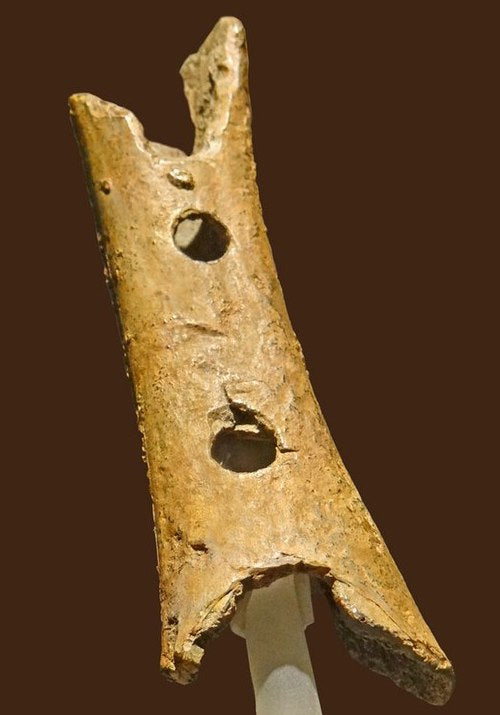The pennywhistle has a long history, with somewhat mysterious origins. While its design is rather simple – with six holes for the fingers to cover and a fipple-style mouthpiece – it is a complex instrument in its own right. Perhaps because of its simplistic design, general affordability, and portability, the humble tin whistle is one of the most accessible melodic instruments around. The music of the pennywhistle can be found all around the world, in some surprising contexts!
You might be most familiar with the instrument from certain Irish musicians who helped to popularize it, (including Mary Bergin and Michael McGoldrick, Micho Russell, Paddy Moloney and Sean Potts, Donncha Ó Briain, Joanie Madden, Brian Finnegan, Kevin Crawford and Cillian Vallely, and Liam O'Flynn). However, the instrument isn't limited to strictly traditional and folk music contexts. If you listen carefully, you'll begin to notice it in a number of popular film scores (such as The Lord of the Rings) and video games (such as Mario Kart). It has also found its way into musical genres such as kwela, rock, and even jazz.
It is difficult to pin down the exact origins of this instrument, as iterations of the vertical fipple flute have likely existed throughout human history (for as long as people have been carving instruments out of wood and bone). For example, a possible fipple flute called the "Divje Babe" dates back 60 thousand years and was crafted out of a bear's femur, making it one of the oldest musical instruments yet discovered. Another sheep's bone flute called the "Malham Pipe" found in Yorkshire dates from the early medieval period. Bone whistles dating back to the 12th century have been found in Dublin, Ireland – so the whistle is by no means a modern invention!
That being said, the modern styling of the whistle is often considered to be the invention of Robert Clarke in England, who made whistles out of folded and tapered tin starting in 1840, with a wood block at the top (other makers around the same period made use of lead, so be careful when playing an old whistle if you have one). Originally marketed as "Clarke Flageolets," these tin whistles were mass-produced due to their ease of construction. The Clarke whistle is still very popular, and the "Clarke Original" harkens back to the original styling of the instrument.
Generally, the pennywhistle can be thought of as a diatonic instrument. However, "half-holing" (partially covering various holes with the fingers) or "cross-fingering" (using alternative fingering) can result in more chromatic opportunities. The basic scale on a pennywhistle pitched in D would be the D major scale, but a G major scale is also easily attainable, along with related modes: D and A mixolydian, E and A dorian, E and B minor. Low whistles have become quite popular in recent years, being a more modern innovation dating back to Bernard Overton in the 1960s, at the behest of Finbar Furey. Popular keys of whistles (from low to high) include: F, A, B♭, C, D, and E♭, but a lot of this comes down to the kind of music you want to play, and personal preference.
So why is it called the "pennywhistle"? Some have suggested that it is because buskers would receive pennies for playing, but perhaps this name has more to do with the general affordability of the instrument – particularly those that were mass-produced in factories in the mid-1800s. it wasn't until the 20th century that the name "pennywhistle" and "tin whistle" became commonplace, and many other names for the instrument exist to describe this member of the fipple flute family, including: vertical flute, celtic flute, jive flute (in kwela music), and feadóg stáin, from the Irish name for whistle (feadóg) and tin (stáin).
When it comes to choosing a cheap versus a "pretty penny" whistle, a lot of it comes down to personal preference. Many famous players of the instrument swear by the classic Generation whistle (with the plastic head joint). Some people prefer the soft and breathy quality of the wood block whistles (such as the Clarke Original). Whistles made of polymer or ABS plastic (such as Dixon and Susato) are not as susceptible to temperature changes, and can sound quite nice as well. Meanwhile, "high end" whistles by various makers often incorporate different types of metal and wood in order to achieve a variety of unique tonal characteristics.
So you might be wondering why there are so many different types of pennywhistles... The simple answer is that sometimes you want something quieter, sometimes louder, and sometimes you don't want to carry something too valuable in your pocket when going on a hike in the woods. Many whistle players collect a whistle for every occasion, and the best way to find out which whistle best suits you is to listen to recordings of whistles, or to try them out yourself! We offer a wide selection of whistles in the Lark In The Morning shop, and our website also lists many of our whistles along with sound samples.
The pennywhistle may seem like a simple instrument, and many think of it as either a toy or a "gateway" instrument, but looks can be deceiving! It is true that whistle techniques can transfer to both flute and uilleann pipes, but there's always going to be a place – particularly in traditional and folk music – for the pennywhistle. It is a beautifully expressive instrument with a long history.
To view our collection of pennywhistles, click here:

